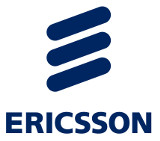Ericsson publishes 2021 Mobility Report
Wednesday, June 16th, 2021
Ericsson Mobility Report: More than half a billion 5G subscriptions by the end of 2021
- 5G remains on track to become the fastest adopted mobile generation in history with subscriptions increasing at a rate of about a million per day
- China, North America and the Gulf Cooperation Council markets are leading the way on subscriber numbers, while Europe is off to a slow start
- 5G subscriptions with a 5G-capable device grew by 70 million during the first quarter of 2021 and are forecast to reach 580 million by the end of 2021
KISTA, Sweden — Ericsson (NASDAQ: ERIC) projects that 5G mobile subscriptions will exceed 580 million by the end of 2021, driven by an estimated one million new 5G mobile subscriptions every day.
The forecast, which features in the twentieth edition of the Ericsson Mobility Report, enhances the expectation that 5G will become the fastest adopted mobile generation. About 3.5 billion 5G subscriptions and 60 percent 5G population coverage are forecast by the end of 2026.
However, the pace of adoption varies widely by region. Europe is off to a slower start and has continued to fall far behind China, the U.S., Korea, Japan and the Gulf Cooperation Council (GCC) markets in the pace of 5G deployments.
5G is expected to surpass a billion subscriptions two years ahead of the 4G LTE timeline for the same milestone. Key factors behind that include China’s earlier commitment to 5G and the earlier availability and increasing affordability of commercial 5G devices. More than 300 5G smartphone models have already been announced or launched commercially.
This commercial 5G momentum is expected to continue in coming years, spurred by the enhanced role of connectivity as a key component of post-COVID-19 economic recovery.
North East Asia is expected to account for the largest share of 5G subscriptions by 2026, with an estimated 1.4 billion 5G subscriptions. While North American and GCC markets are expected to account for the highest 5G subscription penetration, with 5G mobile subscriptions comprising 84 percent and 73 percent of all regional mobile subscriptions respectively.
Fredrik Jejdling, Executive Vice President and Head of Networks, Ericsson, says: “This landmark twentieth edition of the Ericsson Mobility Report shows that we are in the next phase of 5G, with accelerating roll-outs and coverage expansion in pioneer markets such as China, the USA and South Korea. Now is the time for advanced use cases to start materializing and deliver on the promise of 5G. Businesses and societies are also preparing for a post-pandemic world, with 5G-powered digitalization playing a critical role.”
Smartphones and video driving mobile data traffic
Data traffic continues to grow year on year. One exabyte (EB) comprises 1,000,000,000 (1 billion) gigabytes (GB). Global mobile data traffic – excluding traffic generated by fixed wireless access (FWA) – exceeded 49 EB per month at the end of 2020 and is projected to grow by a factor of close to 5 to reach 237 EB per month in 2026. Smartphones, which currently carry 95 percent of this traffic, are also consuming more data than ever. Globally, the average usage-per-smartphone now exceeds 10 GB/month and is forecast to reach 35 GB/month by the end of 2026.
5G Communications Service Providers at the forefront of Fixed Wireless Access adoption
The COVID-19 pandemic is accelerating digitalization and increasing the importance of – and the need for – reliable, high-speed mobile broadband connectivity. According to the latest report, almost nine out of ten communications service providers (CSPs) that have launched 5G also have a fixed wireless access (FWA) offering (4G and/or 5G), even in markets with high fiber penetration. This is needed to accommodate increasing FWA traffic, which the report forecasts to grow by a factor of seven to reach 64 EB in 2026.
Massive IoT on the rise
Massive IoT technology (NB-IoT and Cat-M) connections are forecast to increase by almost 80 percent during 2021, reaching almost 330 million connections. In 2026, these technologies are forecast to comprise 46 percent of all cellular IoT connections.
A closer look: The Gulf Cooperation Council
The report features breakout statistics from GCC markets where government-sponsored digital initiatives are accelerating both technological innovation and expected 5G uptake. In 2019, GCC markets were among the first in the world to launch commercial 5G services. By 2026, they are forecast to manage a combined 62 million 5G subscriptions, accounting for the second highest 5G market penetration globally.
This edition of Ericsson Mobility Report includes four feature articles:
- T-Mobile pursues a multiband strategy
- Businesses build 5G on Wireless WAN foundation
- AI: enhancing customer experience in a complex 5G world
- Planning in-building coverage for 5G: from rules of thumb to statistics and AI
Links: Ericsson
Latest News
- Spideo and OTTera unveil personalisation collaboration at NAB Show 2024
- Amagi integrates Intertrust DRM for FAST services
- Vantiva has shipped 22 million Android TV set-top boxes
- Newsmax launches subscription-based app with 24i
- Slovak Telekom and T-Mobile CZ upgrade video streaming with 24i
- CTV/OTT expected to be fastest growing media channel in U.S. in 2024